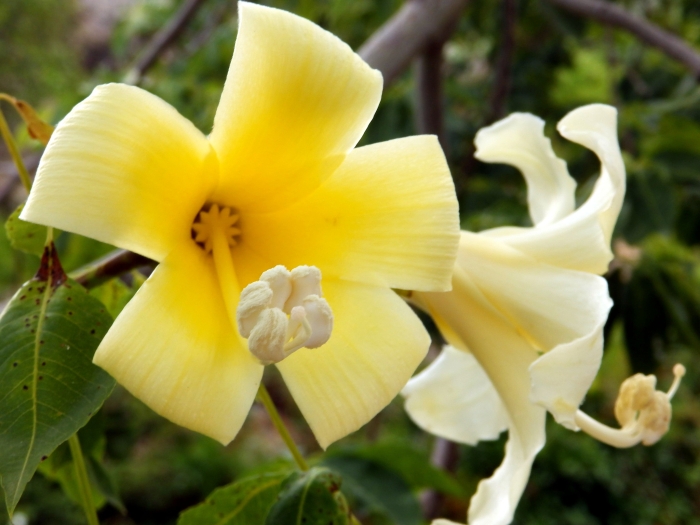White Silk Floss Tree
(Ceiba insignis)
White Silk Floss Tree (Ceiba insignis)
/
/

Amante Darmanin
CC BY 2.0
Image By:
Amante Darmanin
Recorded By:
Copyright:
CC BY 2.0
Copyright Notice:
Photo by: Amante Darmanin | License Type: CC BY 2.0 | License URL: https://creativecommons.org/licenses/by-sa/2.0/ | Uploader: amantedar | Publisher: Flickr |























Estimated Native Range
Summary
Ceiba insignis, commonly known as White Silk Floss Tree, is a deciduous tree native to the dry forests and scrub areas of South America, particularly in the Andean regions of Argentina, Bolivia, and Paraguay. It can grow up to 30 feet (9 meters) in both height and width, and is noted for its distinctive spiny trunk and large, palmate leaves. The tree produces showy flowers that are cream, white, and yellow, blooming profusely in the winter and spring, which are followed by seed pods filled with silky floss.
The White Silk Floss Tree is valued for its ornamental flowers and unique appearance, including its swollen, bottle-like trunk which is an adaptation for water storage. It is used in cultivation for urban planting, as a specimen tree, and for tropical landscaping. This species thrives in full sun to part shade and prefers low to medium water, making it suitable for xeriscaping. It is tolerant of a variety of soil types, provided they have good drainage. While it is generally pest-free, it can be susceptible to frost damage in colder climates.CC BY-SA 4.0
The White Silk Floss Tree is valued for its ornamental flowers and unique appearance, including its swollen, bottle-like trunk which is an adaptation for water storage. It is used in cultivation for urban planting, as a specimen tree, and for tropical landscaping. This species thrives in full sun to part shade and prefers low to medium water, making it suitable for xeriscaping. It is tolerant of a variety of soil types, provided they have good drainage. While it is generally pest-free, it can be susceptible to frost damage in colder climates.CC BY-SA 4.0
Plant Description
- Plant Type: Tree
- Height: 15-30 feet
- Width: 15-30 feet
- Growth Rate: Rapid
- Flower Color: Cream, White, Yellow
- Flowering Season: Winter, Spring
- Leaf Retention: Deciduous
Growth Requirements
- Sun: Full Sun, Part Shade
- Water: Low, Medium
- Drainage: Fast
Common Uses
Fragrant, Low Maintenance, Showy Flowers
Natural Habitat
Native to the dry forests and scrub areas of the Andean regions of Argentina, Bolivia, and Paraguay
Other Names
Common Names:
Scientific Names: , Chorisia insignis, Ceiba insignis, Chorisia integrifolia, Ceiba integrifolia, Ceiba mythica,
GBIF Accepted Name: Ceiba insignis (Kunth) P.E.Gibbs & Semir